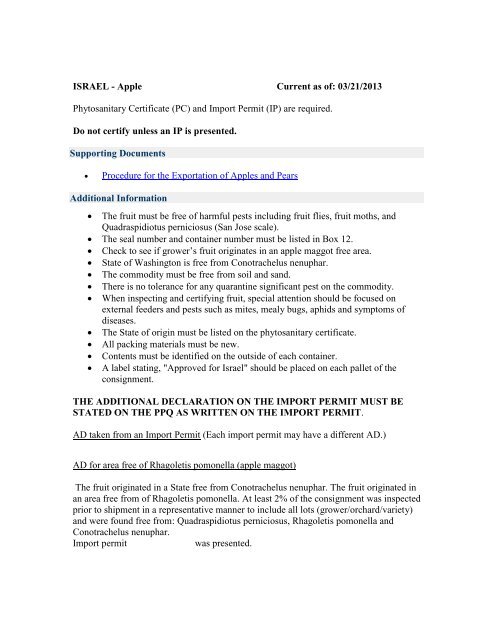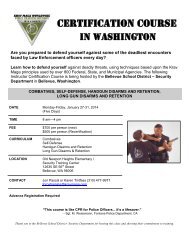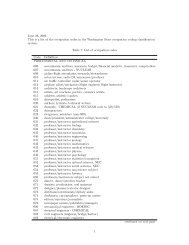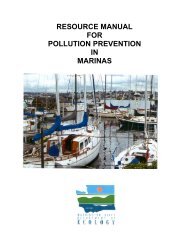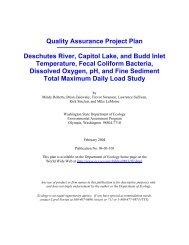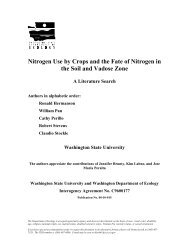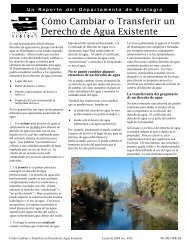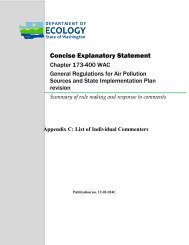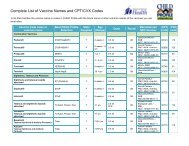ISRAEL - Apple Current as of: 03/21/2013 Phytosanitary Certificate ...
ISRAEL - Apple Current as of: 03/21/2013 Phytosanitary Certificate ...
ISRAEL - Apple Current as of: 03/21/2013 Phytosanitary Certificate ...
You also want an ePaper? Increase the reach of your titles
YUMPU automatically turns print PDFs into web optimized ePapers that Google loves.
<strong>ISRAEL</strong> - <strong>Apple</strong> <strong>Current</strong> <strong>as</strong> <strong>of</strong>: <strong>03</strong>/<strong>21</strong>/<strong>2013</strong><br />
<strong>Phytosanitary</strong> <strong>Certificate</strong> (PC) and Import Permit (IP) are required.<br />
Do not certify unless an IP is presented.<br />
Supporting Documents<br />
Procedure for the Exportation <strong>of</strong> <strong>Apple</strong>s and Pears<br />
Additional Information<br />
The fruit must be free <strong>of</strong> harmful pests including fruit flies, fruit moths, and<br />
Quadr<strong>as</strong>pidiotus perniciosus (San Jose scale).<br />
The seal number and container number must be listed in Box 12.<br />
Check to see if grower’s fruit originates in an apple maggot free area.<br />
State <strong>of</strong> W<strong>as</strong>hington is free from Conotrachelus nenuphar.<br />
The commodity must be free from soil and sand.<br />
There is no tolerance for any quarantine significant pest on the commodity.<br />
When inspecting and certifying fruit, special attention should be focused on<br />
external feeders and pests such <strong>as</strong> mites, mealy bugs, aphids and symptoms <strong>of</strong><br />
dise<strong>as</strong>es.<br />
The State <strong>of</strong> origin must be listed on the phytosanitary certificate.<br />
All packing materials must be new.<br />
Contents must be identified on the outside <strong>of</strong> each container.<br />
A label stating, "Approved for Israel" should be placed on each pallet <strong>of</strong> the<br />
consignment.<br />
THE ADDITIONAL DECLARATION ON THE IMPORT PERMIT MUST BE<br />
STATED ON THE PPQ AS WRITTEN ON THE IMPORT PERMIT.<br />
AD taken from an Import Permit (Each import permit may have a different AD.)<br />
AD for area free <strong>of</strong> Rhagoletis pomonella (apple maggot)<br />
The fruit originated in a State free from Conotrachelus nenuphar. The fruit originated in<br />
an area free from <strong>of</strong> Rhagoletis pomonella. At le<strong>as</strong>t 2% <strong>of</strong> the consignment w<strong>as</strong> inspected<br />
prior to shipment in a representative manner to include all lots (grower/orchard/variety)<br />
and were found free from: Quadr<strong>as</strong>pidiotus perniciosus, Rhagoletis pomonella and<br />
Conotrachelus nenuphar.<br />
Import permit w<strong>as</strong> presented.
AD for a Quarantine area for Rhagoletis pomonella (apple maggot)<br />
The fruit originated in a State free from Conotrachelus nenuphar.<br />
The consignment h<strong>as</strong> undergone a cold treatment procedure in-transit or in a cold<br />
warehouse. At le<strong>as</strong>t 2% <strong>of</strong> the consignment w<strong>as</strong> inspected prior to shipment in a<br />
representative manner to include all lots (grower/orchard/variety) and were found free<br />
from: Quadr<strong>as</strong>pidiotus perniciosus, Rhagoletis pomonella and Conotrachelus nenuphar.<br />
Import permit w<strong>as</strong> presented.<br />
Cold Treatment:<br />
One <strong>of</strong> the following cold treatment schedules is required against Rhagoletis pomonella<br />
and Conotrachelus nenuphar:<br />
0.0 degrees Celsius or below for a period <strong>of</strong> no less than 40 days<br />
0.0 to 0.6 degrees Celsius or below for a period <strong>of</strong> no less than 42 days<br />
2.2 degrees Celsius or below for a period <strong>of</strong> no less than 55 days<br />
3.3 degrees Celsius or below for a period <strong>of</strong> no less than 90 days<br />
1. The cold treatment can be performed either in USDA-approved cold warehouses<br />
or in USDA-approved cold treatment containers (in-transit).<br />
2. USDA approved cold treatment containers must match the approved USDA list.<br />
Call your supervisor.<br />
3. The cold treatment schedule applied should be stated in the appropriate section <strong>of</strong><br />
the <strong>Phytosanitary</strong> <strong>Certificate</strong>.<br />
4. The treatment should be in accord with the USDA Treatment Manual (2010)<br />
requirements (Certification <strong>of</strong> Warehouses Used for Cold Treatment). Until June<br />
1, 2010, only air probes are required, but 4 days must be added to the prescribed<br />
cold treatment schedule. A minimum <strong>of</strong> 3 probes should be used.


